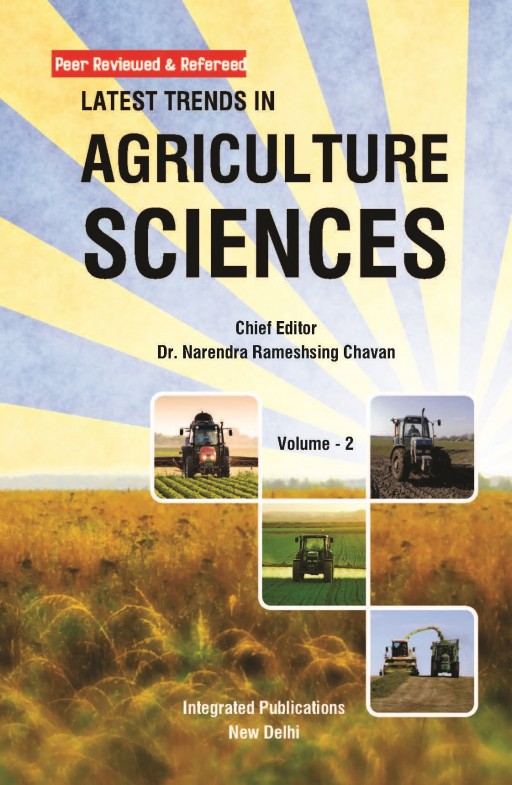Newer Weedicide for Drum Seeded Rice: An Evaluation Study


Field experiment was conducted at Agricultural College and Research Institute, Killikulam during Late pishanam season (November- March) of 2016-2017 to evolve suitable weed management practices for direct sown drum seeded rice in Thamirabarani command area. The experiment was laid out in a randomized block design with three replications. It consisted of twelve treatments viz.,T1- PE pretilachlor @ 750 g a.i ha-1 + one cono weeding, T2 - PE pretilachlor @ 750 g a.i ha-1 + POE azimsulfuron @ 30 g a.i ha-1, T3 - PE pretilachlor @ 750 g a.i ha-1 + POE bispyribac sodium @ 25 g a.i ha-1, T4 - PE anilofos @ 375 g a.i ha-1 + one cono weeding, T5 - PE anilofos @ 375 g a.i ha-1 + POE azimsulfuron @ 30 g a.i ha-1, T6 - PE anilofos @ 375 g a.i ha-1 + POE bispyribac sodium @ 25 g a.i ha-1, T7 - PE pendimethalin @ 1000 g a.i ha-1 + one cono weeding, T8 - PE pendimethalin @ 1000 g a.i ha-1 + POE azimsulfuron @ 30 g a.i ha-1, T9 - PE pendimethalin @ 1000 g a.i ha-1 + POE bispyribac sodium @ 25 g a.i ha -1, T10 - Two cono weddings on 15 and 30 DAS, T11 - Farmer’s practice (Hand weeding twice on 15 and 30 DAS) and T12 - Unweeded control. Rice ASD 16 was used as a test variety. Observations were recorded on weed parameters such as weed flora of the experimental field, weed density, weed dry weight, weed control efficiency, weed index and phytotoxicity rating. Growth parameters viz., plant height, number of tillers hill-1, dry matter production and the physiological characters like LAI and CGR. The yield parameters like number of productive tillers m-2, panicle length, total number of grains panicle-1, number of filled grains panicle-1, fertility percentage and 1000 grain weight were recorded at harvest stage. Grain and straw yield were recorded and harvest index was calculated. The plant nutrient uptake and nutrient status in soil after the harvest were also recorded. Economic parameters like net return and benefit cost ratio were worked out to assess the economic feasibility of various treatments. Dominant weed flora noticed in rice crop established through drum seeder under saturated field condition were Echinochloa colona, Cynodon dactylon, Dinebra retroflexa and Leptochloa chinensis under grasses, Cyperus difformis and Cyperus rotundus under sedges and Celosia argentea, Eclipta alba, Ludwigia perennis, Marsilea quadrifolia, Sphaeranthus indicus and Stachytarpheta jamaicensis under broad-leaved weeds. Broad leaved weeds were found to be the predominant category followed by grasses and sedges. Among the various weed management practices, farmer’s practice (hand weeding twice on 15 and 30 DAS) effectively checked the weed growth, density and dry matter production and reduced the nutrient removal by weeds. It was comparable with the application of pretilachlor @ 750 g a.i ha-1 on 8 DAS as PE + bispyribac sodium @ 25 g a.i ha-1 on 30 DAS as POE. Application of pretilachlor @ 750 g a.i ha-1 on 8 DAS as PE + bispyribac sodium @ 25 g a.i ha-1 on 30 DAS as POE registered higher weed control efficiency and lower weed index. Adoption of farmer’s practice (hand weeding twice on 15 and 30 DAS) recorded higher plant height, number of tillers hill-1, dry matter production, leaf area index and crop growth rate. This was comparable with the application of pretilachlor @ 750 g a.i ha-1 on 8 DAS as PE + bispyribac sodium @ 25 g a.i ha-1 on 30 DAS as POE. Yield attributes like number of productive tillers m-2, panicle length, total number of grains panicle-1, number of filled grains panicle-1, fertility percentage and 1000 grain weight were higher with the adoption of farmer’s practice (hand weeding twice on 15 and 30 DAS). Which was comparable with the application of pretilachlor @ 750 g a.i ha-1 on 8 DAS as PE + bispyribac sodium @ 25 g a.i ha-1 on 30 DAS as POE. Higher grain yield of 6680 kg ha-1 was obtained with the adoption of farmer’s practice (hand weeding twice on 15 and 30 DAS). This was comparable with the application of pretilachlor @ 750 g a.i ha-1 on 8 DAS as PE + bispyribac sodium @ 25 g a.i ha-1 on 30 DAS as POE with a grain yield of 6460 kg ha-1. The same trend was observed in straw yield also. Higher nutrient uptake was also obtained with these treatments. Highest net return of 72929 ha-1 with a B: C ratio of 3.77 was registered with the application of pretilachlor @ 750 g a.i ha-1 on 8 DAS as PE + bispyribac sodium @ 25 g a.i ha-1 on 30 DAS as POE. It was followed by farmer’s practice (hand weeding twice on 15 and 30 DAS) with a net return of 70829 ha-1 and a B: C ratio of 3.22. From the above results, it could be concluded that application of pretilachlor @ 750 g a.i ha-1 on 8 DAS as PE + bispyribac sodium @ 25 g a.i ha-1 on 30 DAS as POE was found to be the viable and economical weed management practices for direct sown drum seeded rice in Thamirabarani command area to realise higher net returns through higher yield.